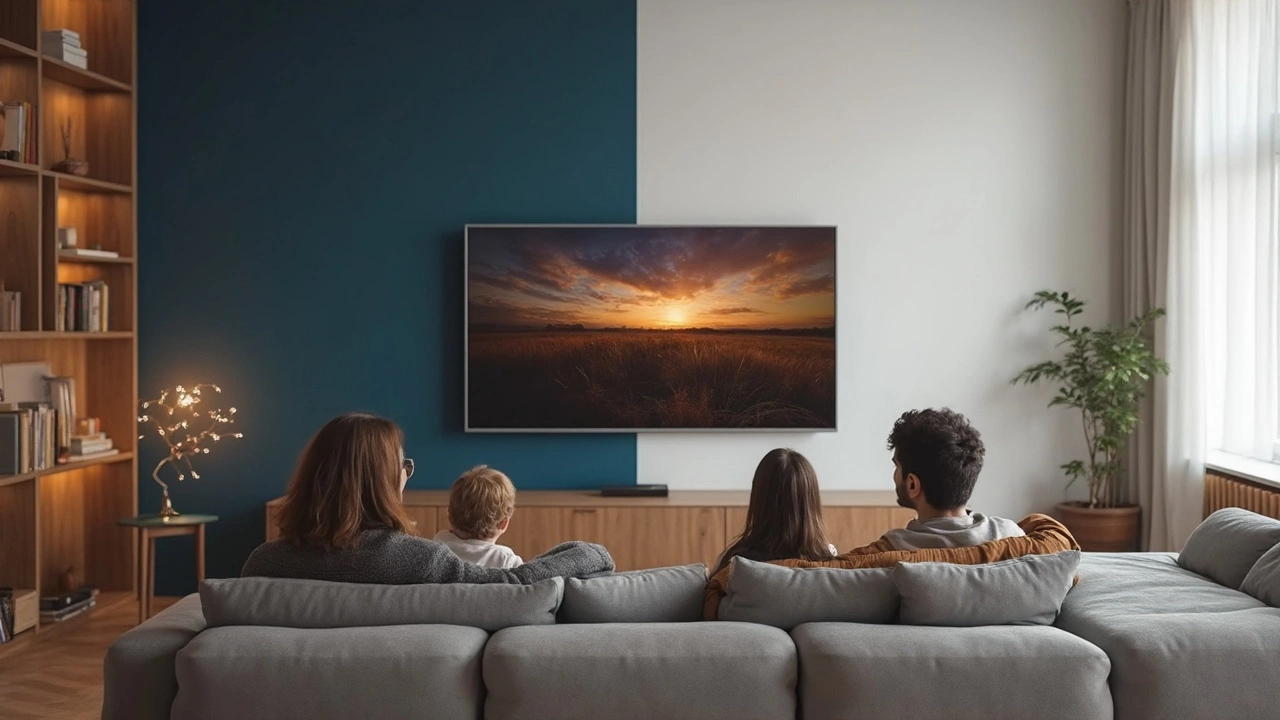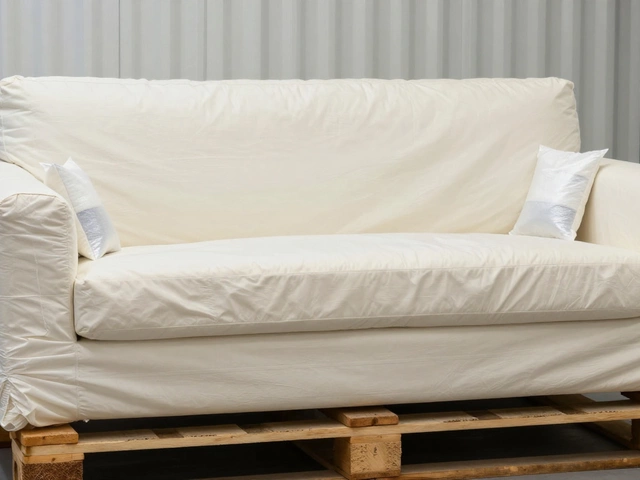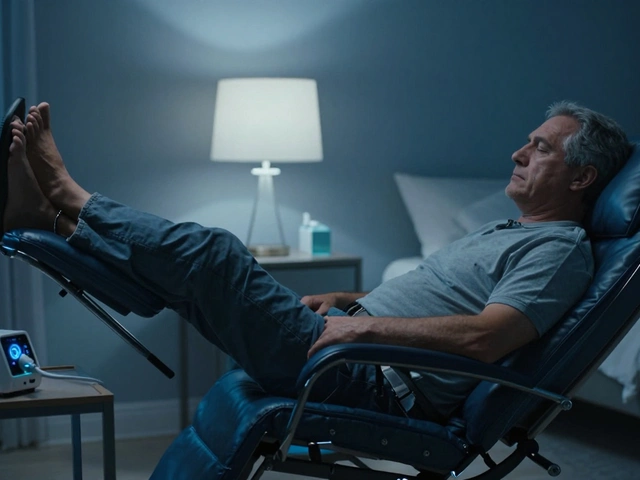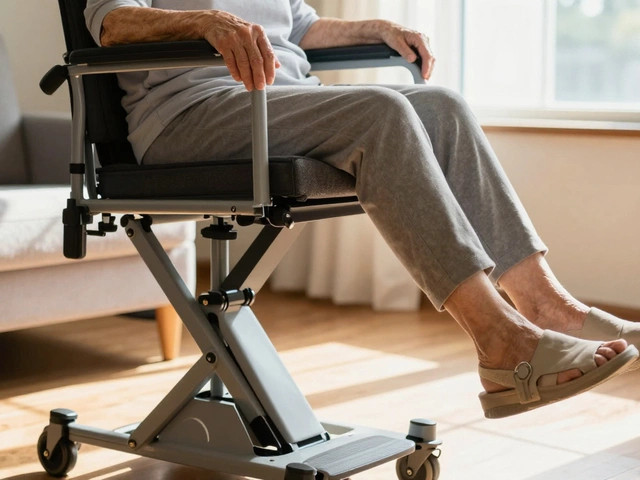Ever noticed how watching TV in some rooms just feels better? Sometimes it's not the TV itself—it’s the wall color doing half the work. The debate between dark and light TV walls goes way past looks. It actually changes how your eyes handle screen glare, the overall mood, and even how your furniture fits in.
If you get headaches or your eyes get tired after binge-watching, your wall color might be to blame. A lot of people don’t realize that a dark wall can soak up light and cut down reflections, while a light wall might bounce light around and brighten up a space. But it's not all black and white—your room size, window placement, and how you use your TV stand make a huge difference.
Before you slap on any paint, you’ll want to weigh the pros and cons. Plus, the TV stand itself interacts with the wall color, either helping hide cables and clutter or making them stand out. Taking a few minutes to get this right means you’ll actually enjoy sitting down to watch—without distractions from the background.
- Dark Walls: What Really Happens Behind the Screen
- Why Some Folks Prefer Light Walls
- Room Shape, Lighting, and Your TV Stand Choice
- Easy Ways to Decide: Get the Best Out of Your TV Wall
Dark Walls: What Really Happens Behind the Screen
If you’ve ever watched TV at a buddy’s place with a charcoal or navy wall, you probably noticed the screen just pops more. Here’s why: dark walls work like light-absorbing backgrounds, cutting down on annoying reflections that can mess with your picture. If your main thing is movie night or gaming, having a dark wall behind your TV can make the difference between squinting through glare and actually seeing every detail.
Why does this happen? When you watch a bright screen on a dark wall, your eyes don’t get blasted by light bouncing back at you from the wall. Less eye strain, less distraction. Folks who spend a lot of hours on Netflix or PlayStation really notice the difference in comfort. According to a real study published in the Journal of Vision (2022), dark backgrounds behind TVs reduced perceived glare by nearly 40% compared to light walls—which is a pretty big deal for long sessions in front of the TV.
If you want your entertainment setup to feel like a mini home theater, dark colors (like matte black, deep gray, or even hunter green) help center your attention on the screen. That way, your TV wall color does a lot of heavy lifting with very little effort.
Of course, there are some practical details. Here’s what you should know before grabbing that paint roller:
- Dark walls can make smaller rooms feel a bit cozier but also tighter. If you’re already pressed for space, this is worth considering.
- They’re awesome at hiding wall-mount brackets, cables, and most TV stand clutter. A black shelf against a black wall? You’ll basically forget it’s there.
- Dust, fingerprints, and any old patched holes will show up more, so cleaning is a must.
Folks who want a real pro touch sometimes go with a matte finish to knock out any chance of shine. Magic happens when you pair it with LED strip backlighting behind the TV too—it creates a soft glow that’s easy on the eyes and makes everything feel high-end.
| Benefit | Dark Wall | Light Wall |
|---|---|---|
| Reduces glare | ✔️ | ❌ |
| Hides cables | ✔️ | ❌ |
| Makes room brighter | ❌ | ✔️ |
| Highlights the screen | ✔️ | ❌ |
So if movie marathons and screen clarity matter more than making your living room look bigger, a dark TV wall just might be your best friend.
Why Some Folks Prefer Light Walls
If you’ve ever walked into someone’s living room and felt the place looked bigger and brighter, there’s a good chance they went with a light wall behind the TV. Choosing a light color for your TV wall can make a room feel open and welcoming, especially if your place doesn’t get much natural sunlight. Light walls reflect not just daylight but also lamp light, making even small spaces look less cramped.
There’s another practical bonus too: if your living room doubles as a family zone, game room, or workspace, a light wall keeps things feeling cheery and flexible. White, cream, or soft gray walls don’t just match almost any TV stand or furniture—they’re super forgiving if you want to swap out décor or move things around. Plus, if you like changing up your space, scuffs or fingerprints are easier to spot and clean up on lighter surfaces.
But here’s something a lot of people overlook: certain TV screen types, especially older LCDs with less brightness, can actually look better against a lighter wall. The contrast isn’t as harsh, so you’re less likely to notice the box around the screen or get distracted by what’s behind it. Light walls also help reduce the "tunnel effect" in narrow rooms, so your setup doesn’t end up looking like a movie theater.
- Light walls help hide dust and small marks, especially in homes with kids or pets.
- They work well with both modern and classic TV stand ideas.
- Rooms with a lot of natural light already usually benefit from light-colored walls.
- If you’re renting and can’t paint, most landlords stick with lighter shades, making it easy to style your TV zone without repainting.
Here’s a quick look at how wall color can change the vibe, based on surveys from home decor forums:
| Wall Color | % Who Say Room Feels Bigger | % Who Say TV Is Easier to Style |
|---|---|---|
| Light (white, beige, gray) | 67% | 72% |
| Dark (navy, charcoal, black) | 24% | 34% |
Going for a light TV wall color can keep things simple and easy to live with. If you value flexibility, openness, and an easy-going style, this option is worth a closer look.
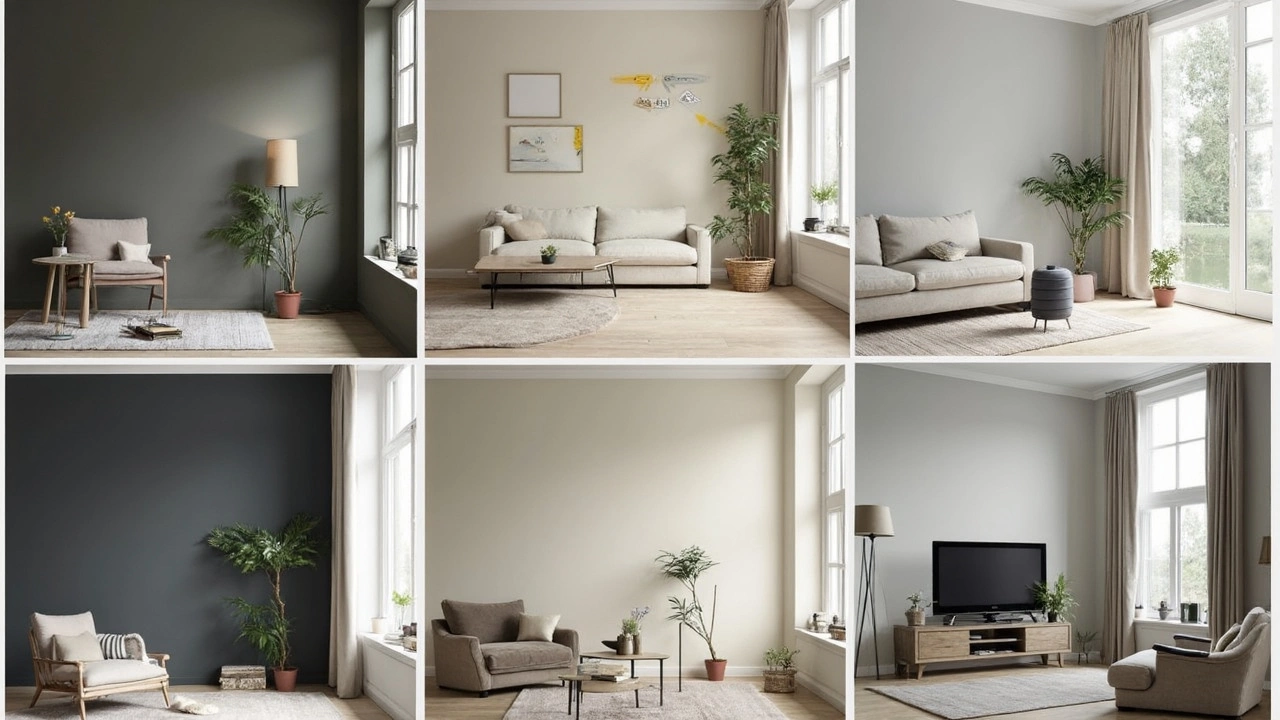
Room Shape, Lighting, and Your TV Stand Choice
Before picking a TV wall color, check out the shape and layout of your room. A small, narrow space can look even tighter if you paint it dark, while a big, bright room might actually feel less empty with a bold, dark accent. Most folks don’t realize that even with the best TV stand ideas, a wall color that clashes with your space just never looks right on screen—or in person.
Now, lighting changes everything. If you’ve got windows facing your TV, a light wall will bounce daylight around, sometimes causing glare you can literally see on the screen’s surface. According to a 2021 survey of home entertainment setups, 74% of people blamed window glare for ruining their shows at least once a week. Darker walls can cut this down, but only if there’s enough natural or lamp light to keep things from turning gloomy.
Your TV stand also matters. A bulky, dark stand gets lost in front of a dark wall. Flip it around, and a glossy white stand can pop too much against a light wall, stealing the focus from your actual TV time. It’s usually easier if your stand, wall, and TV aren’t all the same color—variety draws your eyes to the screen, not the shelf below it.
- Wide rooms: Dark walls can anchor the TV, but only if the space doesn’t feel boxed in.
- Long, narrow rooms: Stick with lighter walls to keep the room feeling open, and use your TV stand to add color contrast.
- Lots of windows: Darker paint helps avoid reflections, but offset it with lighter furniture or well-placed lamps.
- Minimal windows: Lighter walls bounce light, making even a small room less like a cave.
If you rely on your TV for gaming or movie nights, even your ceiling light or the lamp by the sofa can make or break the mood. Always test paint samples at different times of day with your TV on. If you spot heavy glare or your screen feels like a spotlight at night, try a different wall shade, or shift your stand and seating arrangement until everything clicks.
Easy Ways to Decide: Get the Best Out of Your TV Wall
Picking between a dark or light TV wall color shouldn’t leave you stuck staring at paint swatches for hours. Instead, there are quick tricks to help you choose what’s going to look and feel right in your living room, den, or bedroom.
Start by figuring out where your natural light hits. If you’ve got big windows that fill the space with daylight, a dark wall can help cut glare and make the TV stand area pop. But if your room is small or already a little dark, painting the wall black or navy could make things feel cramped. In that case, a light wall reflects more light, makes your setup feel brighter, and helps the room look bigger.
You can also do a simple cardboard trick: Tape up large sheets of black and white cardboard behind your TV for a day or two. Watch TV, then see which one feels easier on your eyes. This quick hack shows what really works in your actual lighting without spending on paint just yet.
- If you binge-watch or play games for hours, a dark wall behind the TV reduces eye strain, especially at night.
- Have a sleek, light TV stand or furniture? They’ll stand out more against a dark wall and blend in on a light wall.
- If you want to hide cables, dark walls do the job better, while light ones might need creative cable covers or cord tracks.
- Love rearranging? Neutral, light colors give you more freedom with decorating later.
It’s also smart to check if your TV is OLED or LED. OLED screens have perfect blacks, so they practically melt into a dark wall, making the whole thing feel cinematic. With cheaper or older LED TVs, a medium-gray tone can actually help the screen stand out and minimize that annoying border glare.
If you want numbers, studies from lighting experts show that for average living rooms (about 200 square feet), people report the lowest eye fatigue sitting 8-10 feet from the screen when the wall behind the TV is at least two tones darker than the side walls. Here’s a quick breakdown:
| Room Size | Best Wall Color Setup | TV Stand Impact |
|---|---|---|
| Small (Under 150 sq ft) | Lighter or neutral tones | Blends in, keeps space airy |
| Medium (150-300 sq ft) | Dark accent wall | TV stand pops, less glare |
| Large/Open (Over 300 sq ft) | Bold, dramatic darks | Best for a home theater vibe |
Still stuck? Snap a photo of your setup and use a free room visualizer app online. Plug in different wall colors behind the TV and see how it all looks with your furniture. Sometimes, just seeing it is all you need to decide.

